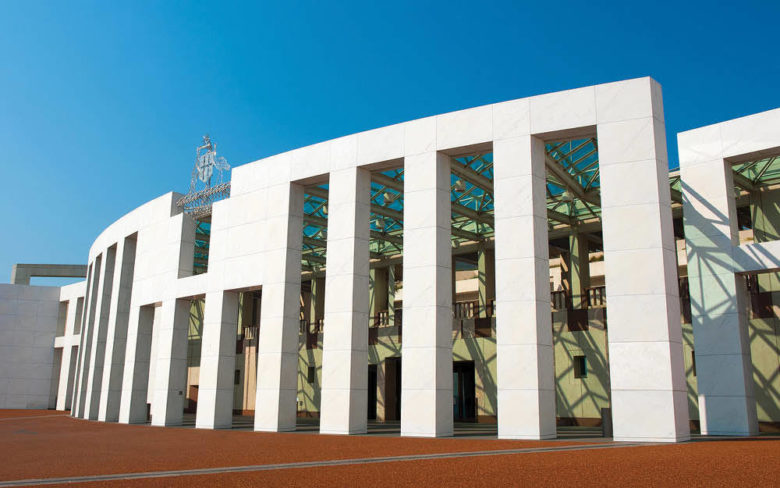What the Federal budget means for you?
With a federal election looming, the 2019/2020 Federal Budget aims to deliver tax cuts to low and middle-income workers and small businesses, superannuation tweaks for older Australians, and energy assistance payments.
Keep in mind that a fair chunk of the below policies depend on the Coalition government winning re-election in May – although Labor has announced bipartisan support for some.
But here’s what this year’s Federal Budget essentially means for you.
Tax cuts for low- and middle-income earners
The government aims to reduce taxes for low to middle-income earners through additional targeted offsets that aim to benefit over 10 million Australians.
The big winners from this year’s federal budget are middle-income workers earning between $48,000 and $90,000, who will receive a maximum tax cut of up to $1,080 for single earners. For a dual income family where two individuals earn in that range, the tax relief will total $2,160.
Labor says they’ll support these personal tax breaks, claiming it was already their policy.
Meanwhile, people who are earning up to $37,000 a year will receive an additional $55 tax cut in 2019-20. That’s just approximately a buck a week. With the base amount increasing from $200 to $255, for these income earners. Those who earn between $37,001 and $47,999 seeing incremental increases between $255 and $1,080.
Finally, people who earn $90,001 to $126,000 also get a slice of the pie. People on $90,000 will receive the highest increase of up to $1,080 ($550 more than last year). This amount reduces on a sliding scale to zero for those on a taxable income of $126,000.
Tax rate flattened
High-income earners are also set to benefit under another tax change to flatten the tax brackets, from 1 July 2024.
Essentially, it would see all taxpayers earning between $45,000 and $200,000 have their marginal tax rate reduced to 30%.
This proposed change is significant. As it stands, those who earn between $37,001 and $90,000 are in a 32.5 percent tax bracket, those earning $90,001 and $180,000 pay 37 percent, while those who earn $180,001- $200,000 are in a 45 percent tax bracket. Full details on individual income tax rates available on the ATO’s website.
Labor isn’t supportive of this plan, arguing it favours higher income earners.
Small and medium business benefits
Tax cuts for small and medium businesses have been fast-tracked. The tax rate will come down from 27.5% to 26% next year and 25% starting in 2021. This compares to the standard company tax rate of 30%. The government is also increasing the instant asset write-off threshold from $25,000 to $30,000 per asset.
Eligibility for the scheme has been expanded from small businesses (up to $10 million in annual turnover) to medium-sized ones (up to $50 million in annual turnover). This change came into effect on 2 April 2019.
Meanwhile, employers will also have their apprentice incentive payments doubled to $8,000 per placement, while apprentices will receive a $2,000 incentive payment.
Eligible occupations include carpenters, plumbers, hairdressers, air-conditioning and refrigeration mechanics, bricklayers, plasterers, bakers, vehicle painters, tilers and arborists.
Superannuation tweaks
Older Australians will be allowed to put money into their super for longer.
From July 1 2020, Australians aged 65 and 66 will be able to make voluntary superannuation contributions without meeting the Work Test – which requires they work at least 40 hours over a 30 day period.
During this time, the same age group will now also be allowed to make up to three years’ worth of voluntary contributions, currently capped at $100,000 a year, in just one year.
Finally, the government is increasing the age limit for spouse contributions from 69 to 74 years. Currently, those aged 70 years and over cannot receive contributions made by another person on their behalf.
Energy assistance payment
A one-off Energy Assistance Payment, worth $75 for singles and $125 for couples, will be delivered to age pensioners, people on the Disability Support Pension, veterans, carers and single parents before July if the legislation is passed.
The payment was extended to Newstart recipients the day after the federal budget was released.
Healthcare and mental health
The government has pledged $527.9 million over five years for a royal commission into violence, abuse, neglect and exploitation of people with disability.
$737 million will also be put towards the government’s mental health and suicide prevention strategy, including funding for 30 new headspace centres – bringing the total number up to 145 by 2021.
Finally, the government has recommitted to funding the National Disability Insurance Scheme (NDIS). That said, a slower than expected uptake of the NDIS helped deliver a $1.6 billion saving to the budget’s bottom line, which in no small part contributed to the projected surplus.
If you’d like more information on how the measures contained in the 2019 Federal Budget will affect you, please give us a call.


Comments are closed.